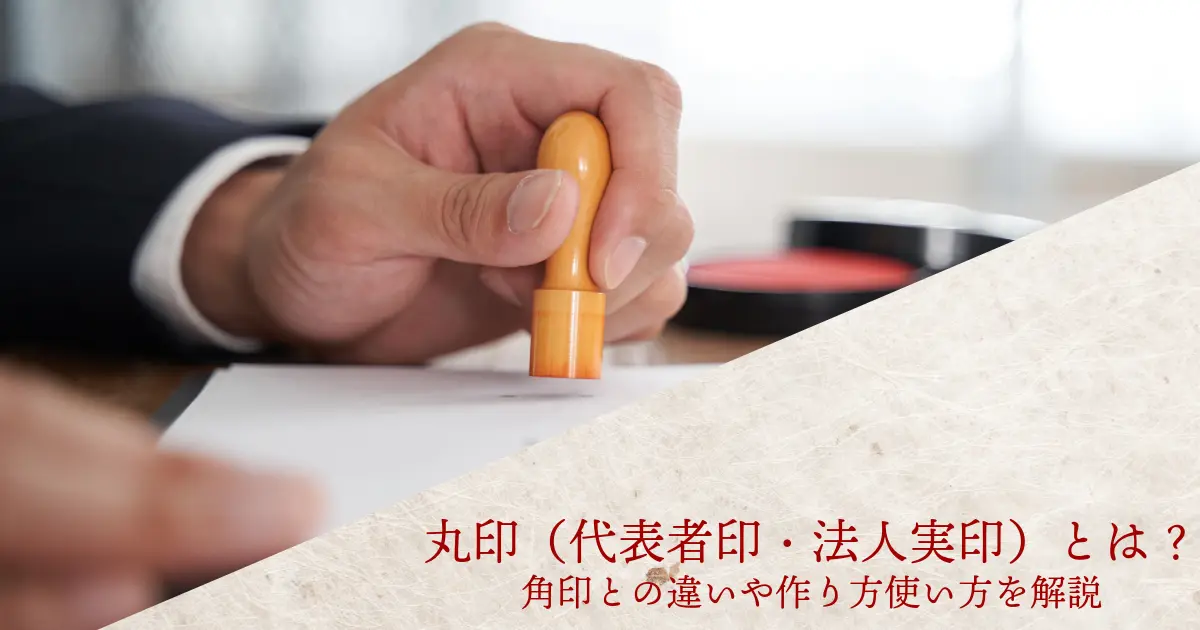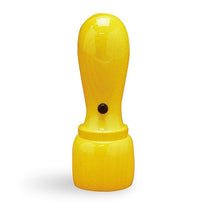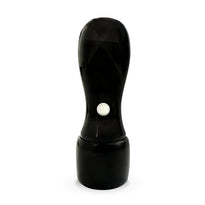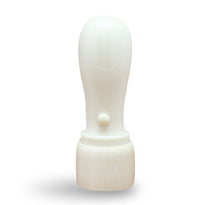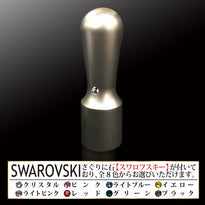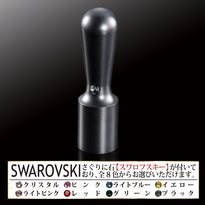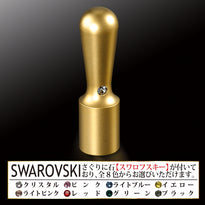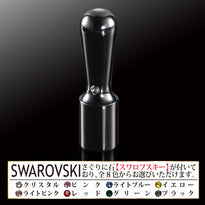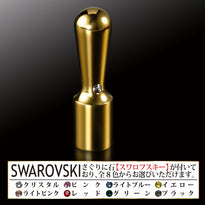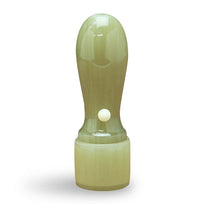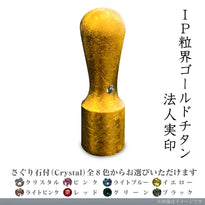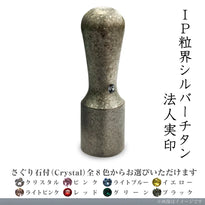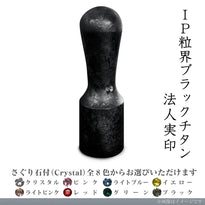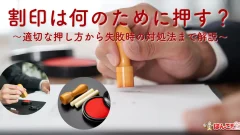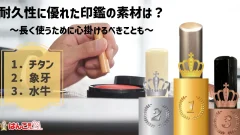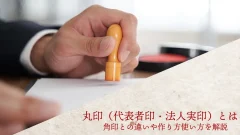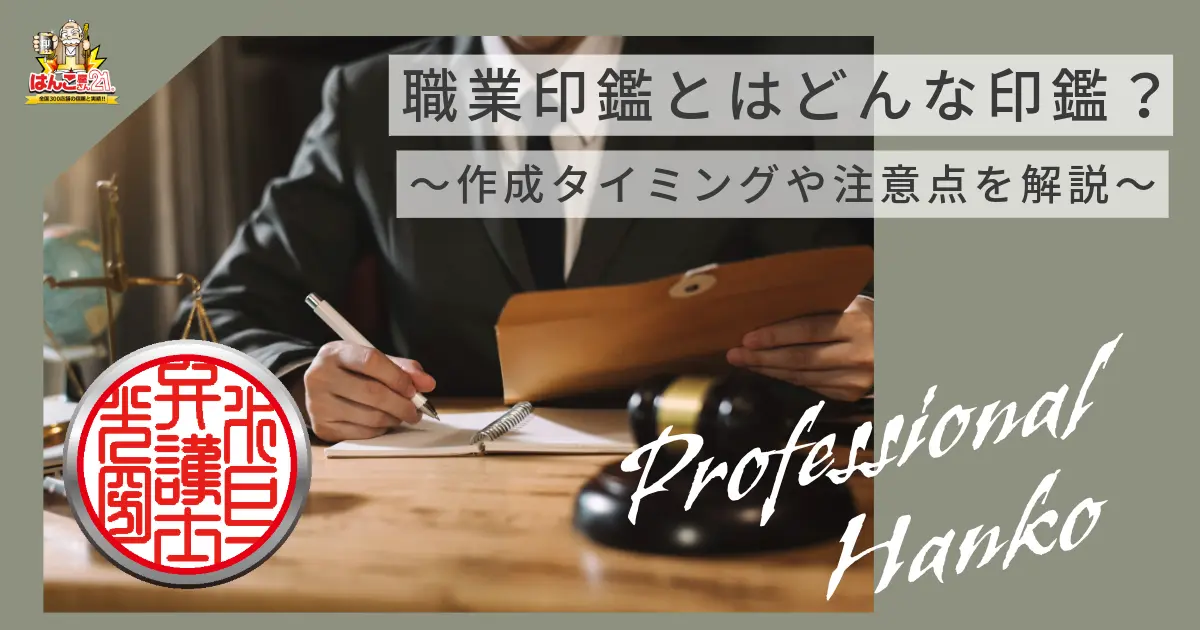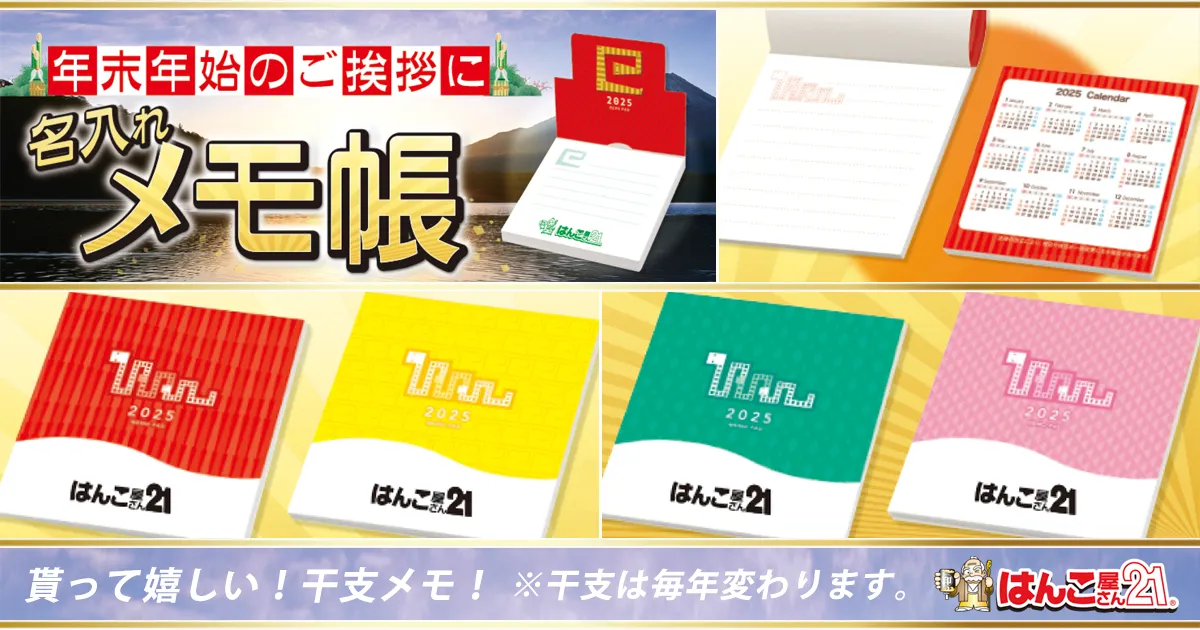This is a so-called "corporate HANKO" used by organizations such as companies and groups to stamp documents such as contracts.
Among the several types, the most important one is the representative seal (corporate seal) called a "round seal." On the other hand, there is also a commonly used corporate HANKO called a "square seal."
Here we will touch on the differences between round and square stamps, and also explain how to use them, how to choose materials when making a round stamp, and how to insert text.
Difference between round and square stamps
The official name of a stamp is "insho" (seal), and when a stamp is filled with vermilion and pressed onto a document or other piece of paper, the mark that is left behind by the vermilion is called the "impression." To be precise, this impression is called a "HANKO."
In the Edo period, pictures and characters were printed using woodblock prints, and there is a theory that the word "hanko" came from "hanko" as this was called "banko" or "banko." In government offices and banks, only those registered in a "kagami" (mirror) were considered genuine "hanko," and the "impression" of the stamp was checked against the "kagami." It is said that this is when seals came to be called "HANKO."
Broadly speaking, a seal with a round impression is called a "round seal" and a seal with a square impression is called a "square seal."
What is a circle mark?
A round seal is often used as a company's official seal, in which case it is called the "representative company seal," "corporate seal," "company seal," etc. The representative seal is a very important HANKO registered with the Legal Affairs Bureau when establishing a company, and is a legally binding corporate seal.
For this reason, seals with round HANKO are also used for company bank seals, but in such cases they are not often called "round seals."
Also, some companies may use a round seal other than the representative seal, but generally speaking, "round seal" refers to the representative seal (the company's official seal).
What is a square seal?
They are called "square seals" because the impression they make is square, and are primarily used as company seals (company seals) without being submitted to the Legal Affairs Bureau, city hall, banks, etc. Round seals are used for important contracts such as purchasing goods and commissioned work, real estate registration, etc. as a HANKO to certify the rights and obligations of the corporate representative, while square seals are used in a wide range of situations such as receipts, invoices, delivery notes, and purchase orders issued by companies. In some cases, square seals used as company seals are made with stamp-type ink-permeable stamps.
How to stamp round and square marks
Can round and square stamps be used interchangeably?
When using a round seal as a representative company seal or corporate official seal, and a square seal as a company seal, the usage and the position of the seal are different for each. The size of a round HANKO that can be registered by the Legal Affairs Bureau is set as "fitting into a square with a diameter of 10mm to 30mm," and the size of the seal face is generally made to be 18mm. On the other hand, there is no size regulation for square seals, but the size of the seal face is generally made to be 24mm.
The reason why they are made in different sizes as well as in round and square shapes is because their roles are clearly different. For example, it is theoretically possible to use a round seal registered with the Legal Affairs Bureau as a corporate official seal as a personal seal, and conversely, to register a square seal used as a personal seal as a corporate official seal, but this should be avoided. This is because there is a high risk that the impression used as a personal seal on various documents will be copied and misused as a corporate official seal.
Key points for pressing
When stamping a document, first take great care to ensure that the impression is clear. By the way , stamping only the HANKO without writing your name or stamping the HANKO next to a pre-printed name is called "sealing," whereas writing your own name and stamping the HANKO when you are asked to "sign and seal" is called "sealing." Stamps with the person's signature are said to have more legal effect.
To leave a nice impression, you need to get the hang of it. Be careful not to get too much red ink on the seal, and apply it by tapping it lightly without rubbing it. If you use too much red ink, the HANKO may bleed. When pressing the HANKO onto a document, press it horizontally so that it does not slip, and shift the center of gravity appropriately so that the pressure is applied evenly. It is effective to use a stamping mat, but if you don't have one, you can use newspaper or magazines instead.
Different ways of pressing
In the case of a round seal (representative seal/corporate official seal), the HANKO should be placed to the right of the company name or representative name written (or written) on the document, without overlapping with the characters. When writing a name by hand, the representative name is generally written below the company name. Be careful not to place the HANKO upside down, and make sure it does not smudge.
A square seal (personal seal) is pressed to the right of the company name or representative's name so that it overlaps the last character. Since square seals are used in various situations as personal seals, there is a risk that the seal impression will be copied, so the aim is to prevent the document from being copied by overlapping it with the characters. Please note that this is different from a round seal, which is pressed so that it does not overlap.
Depending on the document, you may be asked to use both a round seal and a square seal. Be sure to check with the other party specifically what part of the document requires it, and there may be company policies regarding the use of round seals (representative seals and corporate seals), so ask your supervisor for advice.
Other ways to HANKO
In some cases, a HANKO may be stamped across multiple pages of a contract, such as in a method known as "Kei-in." When there are multiple pages in a contract, a "Kei-in" is used to prove that the contract is a continuous document. Stamping across the binding of pages can also be effective in preventing document forgery or tampering.
Similar to a 'Kei-in' is a 'Wari-in'. To prove that multiple documents have the same content, for example, the original and the copy are stacked one on top of the other, and the seal is placed over that part. When the original and the copy are placed together, the seal impression becomes the original, so they can be proven to be the same.
When you hear the word "postmark," you may think of the stamp on postage stamps, but postmarks are also used when attaching revenue stamps to company receipts. Postmarks are used to prove that a postage stamp or revenue stamp has already been used.
A "correction seal" is a HANKO used when correcting the contents of a document, and serves to prove that the person who created the document made the corrections. The correction seal must be the same HANKO as the one used on the document.
Size and material of the circle stamp
Regarding the HANKO to be registered with the Legal Affairs Bureau when establishing a company, the Commercial Registration Regulations stipulate that "the size of the HANKO must not exceed a square with sides measuring one centimeter or a square with sides measuring three centimeters," and "the HANKO must be suitable for comparison" (Commercial Registration Regulations, "Submission of HANKO, etc.", Article 9-3-4).
Round seals (representative seals and corporate seals) must fit within a square of 1cm to 3cm and be suitable for verification. The typical size (diameter) when made is 18mm. Also, to be suitable for verification, the HANKO must be clear and unchanging. Rubber stamps and the like may change slightly in impression as they are used, so they are deemed unsuitable and cannot be registered.
So what kind of material is suitable for making a round seal?
Genuine ivory
Ivory is considered the highest quality seal material and is nicknamed the "king of stamps." This is because it has a combination of the "luxury" feel of the HANKO itself and when you hold it in your hand, "durability" that allows it to be used for a long time, and "printability" that allows it to take ink well and leave a beautiful impression.
Ivory is ranked differently depending on the part, and seal materials taken from parts with a coarse grain are widely available, but the parts closer to the core, known as "real ivory," where the grain is calmer, give off a more luxurious feel.
black buffalo
Black HANKO are often made from black buffalo horns. Some are made from processed and colored buffalo horns, but the more expensive the material, the more likely it is to use the central part of the buffalo, called "shinmochi," and so only a small amount can be obtained.
It blends well with vermilion ink, allowing for beautiful impressions to be produced; its beautiful black luster and excellent durability make it suitable for round seals (representative seals and corporate seals); another advantage is that it is more affordable than real ivory.
Boxwood, Boxwood (Akane)
There are two types of boxwood: "Hontsuge" and "Satsuma Hontsuge", which are produced in Kagoshima Prefecture, and "Akane", which is made from Rubiaceae wood imported mainly from Southeast Asia. Although they look very similar, Hontsuge and Satsuma Hontsuge are characterized by their dense fiber and fine texture.
Titanium
Titanium, known as a rare metal, has recently been attracting attention as a seal material. The pure titanium used in seals has ultra-fine particles, which give it a high level of printability, allowing it to take on vermilion ink well and leave a beautiful impression. It is also so durable that it is used as a material for jet planes.
It can be washed with water, and is a metal that is gentle on people and unlikely to cause metal allergies, so it is used in the medical field for artificial joints, cardiac pacemakers, etc. It is becoming increasingly popular not only as a material for personal HANKO, but also as a material for round seals (representative seals and corporate seals).
Characters to put in the circle
typeface
There are various typefaces for HANKO, such as "Tenshotai", "Kointai", and "Insoutai", but when making a corporate HANKO, it is common to use "Tenshotai".

Seal font

Inso body

Kointai
Engraving contents
The impression of a round seal (representative seal or corporate seal) consists of two circles, and it is common to have the company name or trade name carved in the outer circle and the job title such as "President Director Seal" carved in the inner circle.
The content inscribed inside the inner circle varies depending on the type of legal entity; for example, a joint-stock company would have the "chairman seal," a general partnership or limited partnership would have the "representative seal," non-profit organizations (NPOs), agricultural cooperatives, and labor unions would have the "director's seal" or "representative director seal," and religious corporations would often have the "representative officer" engraved.
summary
Above, we have touched on the difference between round and square corporate HANKO, and explained the role and how to use a round seal when used as a representative seal or corporate official seal. We hope this will be helpful when you are preparing a corporate HANKO for company establishment and when you actually use a round or square seal.
 日本語
日本語 English
English 简体中文
简体中文 繁體中文
繁體中文 한국어
한국어 ไทย
ไทย Tiếng Việt
Tiếng Việt Indonesia
Indonesia Français
Français Español
Español Português
Português
